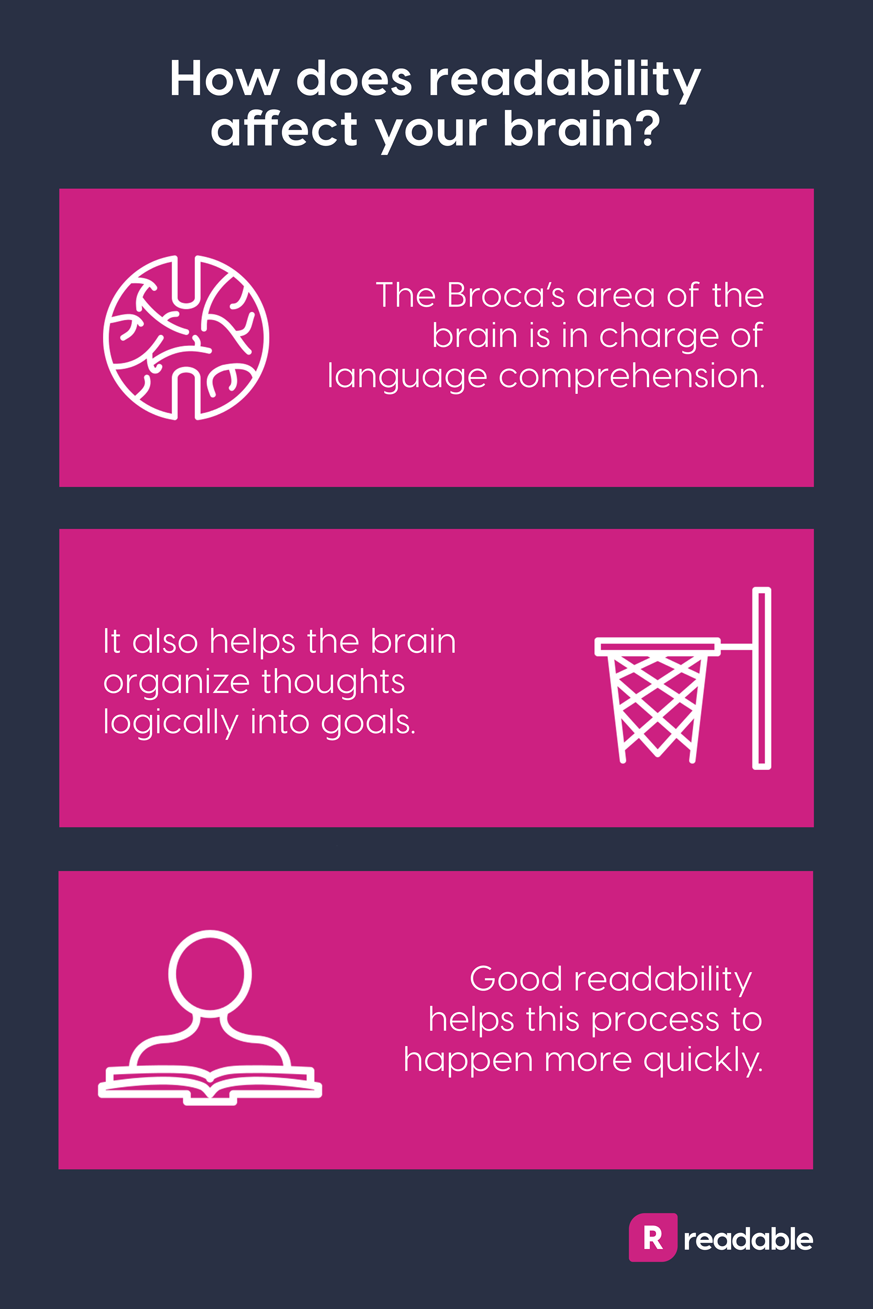Readability has become widely recognized as an SEO-approved tool. But, what about the audience who drive this optimization for Google, and why does the brain love a readable sentence?
What does Google have to do with the human brain?
Google's evolution story is vital to readability. We doubt you’re this late to the party, but no sweat if you are — in short, Google’s Hummingbird update was one small step for man and one giant leap for search engines.
If you used the internet in the ‘90s, you might remember how everyone thought they had SEO all figured out. It was a simple landscape back then.
Let’s take this quintessentially ‘90s - albeit dark - example from the UFO cult Heaven’s Gate’s website.
First of all, let’s not underrate its awesome visuals.

But, underneath this cosmic exterior, there’s hidden treasure.

You only have to highlight the footer to find some good old-fashioned keyword stuffing. This allowed a website owner to climb the SEO ranks behind the scenes.
Several updates later, in 2013, Google revolutionized search algorithms and how we interact with them. Cue Hummingbird.
Hummingbird and its following developments aim to make search interactions more human.
Rather than giving you a result based on any number of keywords you type in, such as ‘Heaven’s Gate’ or ‘UFO cult’, Hummingbird focuses on the why of your search.
It does this based on semantics - the why of your search can be figured out in relation to the other words you’re using in your search, and the order you type them in.
Because Google is interested in the intent of your search, if this was introduced back in the ‘90s you might have got more specific results by typing, ‘How do I join Heaven’s Gate?’ or even localized search results with a query like, ‘UFO cults near me’.
Disclaimer: Please don’t join a UFO cult. It’s a great example of how much SEO has changed, but it’s probably not a good idea.

How does this affect my content?
The importance of context since the introduction of Hummingbird has encouraged users to use more conversational search terms and natural language.
If you want visitors to your website, you need to answer the questions they’re really asking. Your content should be a reflection of their natural and conversational question.
Always keep in mind your bounce rates and how easy it is for your user to click away and try another search result.
Your website’s UX will approve astonishingly, simply with some qualitative improvements to your content.
Website copy which is convoluted and difficult makes for a bad user experience. Increasing the readability of your content is going to make it easier for the user to navigate through the information on your site.
They’ll trust your brand more and content that gives them the answers they need will be of higher quality.
Semantic search affects your SEO because it’s not enough to write for search engines anymore.
We need to write for the people who drive search engine interactions. We need to shift our focus and write for human beings again.
How do we know the human brain loves readability?
Neurology’s important role in language become known following one unfortunate man’s brain injury.
Pierre Paul Broca, a 19th-century French doctor, put his name to a particular area in the left frontal lobe of the brain, immodestly calling it Broca’s area.
This followed the discovery of a large lesion to this area in one of his former patients who had language difficulty - specifically speech production.
But, the Broca’s area went on to be recognized as even more complex, with connections to language comprehension as well as speech, and other executive functions.
This means it helps the reader to vary their depth of understanding and engagement in accordance with different reading goals. In other words, a mental filter for comprehension.

As neurology has progressed, it’s been confirmed that semantic functions come from a network of areas in the brain. Predominantly, the Anterior temporal lobe networking with the Broca’s area and Wernicke’s area of the brain.
The Wernicke’s area is located in the temporal lobe and, similarly to the Broca’s area, is involved with language comprehension and development.
All of this is important for readability because of the goal of reading to find answers or reading to scan when searching the web.
Firstly, as it’s in charge of comprehension and semantics, writing to satisfy this part of the brain without overworking it is key to understanding semantic search habits.
If you simplify your sentences and anticipate questions your reader may have, your reader will appreciate you following the same line of logic as them.
Secondly, the reader is neurologically wired to change the way they read to do this - so, when faced with a long and rambling text, they’ll be mentally filtering the fog and looking for clear answers.
What makes the difference is how hard you make this for them. Are you putting the onus on your reader to work harder for the reward?
Here are some easy ways you can tweak your content to appeal to this mental filter:
- Use subheadings. Using subheadings will break your text into easily digestible chunks. As well as the smaller chunks of information, your reader will also appreciate the structure - it’ll be clear to them on scanning your content that it’s structured in a logical way that leads to an information goal.
- Use smaller paragraphs. If you use paragraphs which are too chunky and dense, your reader’s brain will have to work harder to extract the essential information.
- Use shorter sentences. This is core to readability. But, it also means your reader’s temporal lobe won’t have to work as hard to comprehend your message. If you use too many short sentences, your content will sound a little robotic. But, just breaking down a few long sentences will make a world of difference. It helps you to get to the point and convey information in a short and snappy way.
Although we still have untold amounts to discover about the human brain, the localization of mental functions can tell us a lot about how we can satisfy our audience.
By keeping your writing clear, concise and readable, you’re not only making your content a joy to read - you’re also supporting your reader’s goals.


